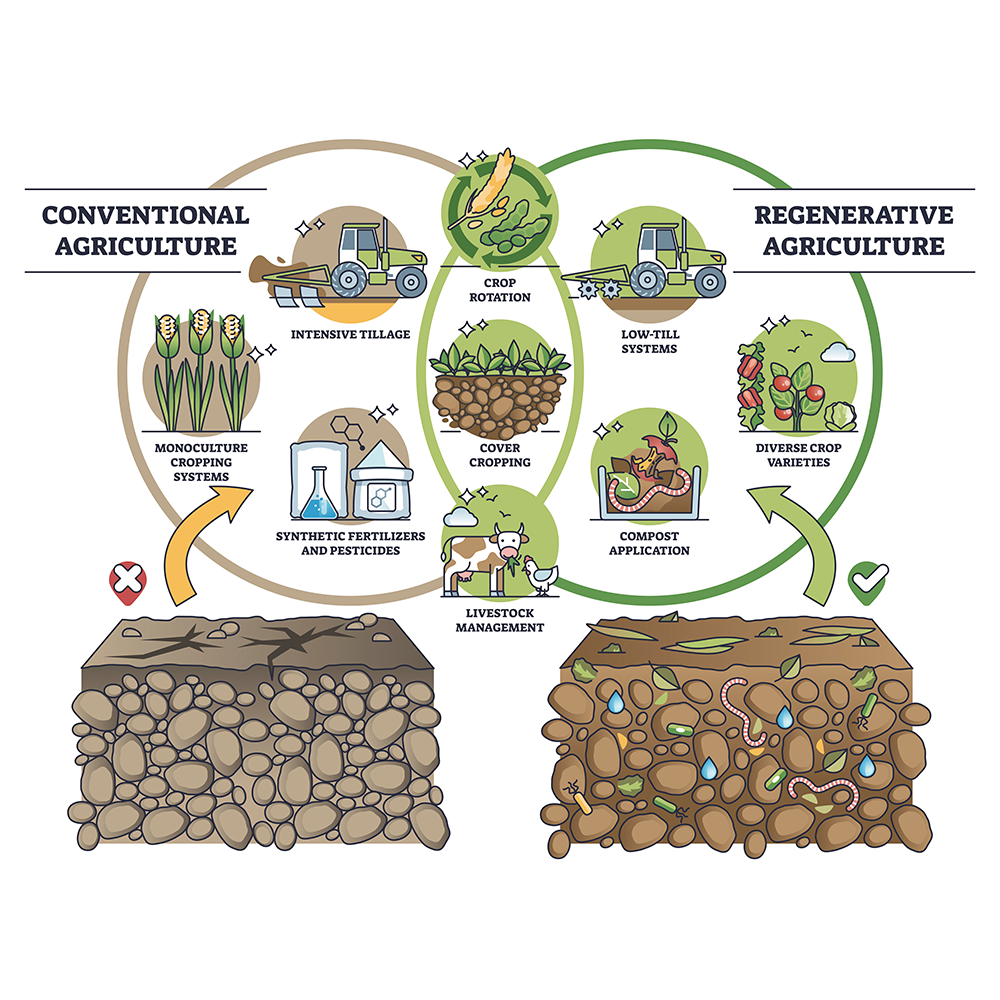Regenerative agriculture is an approach to farming that prioritizes soil health, biodiversity, and natural processes. It is a holistic approach. That treats the farm as a diverse biosystem which can restore and replenish natural resources.

Regenerative agriculture is an approach to farming that prioritizes soil health, biodiversity, and natural processes. It is a holistic approach. That treats the farm as a diverse biosystem which can restore and replenish natural resources.
Regenerative farmers use a variety of practices, such as crop rotation, cover cropping, reduced tillage, and the integration of livestock to improve soil health, conserve water, and promote biodiversity.
Benefits
- Reverse climate change: Regenerating our farmland can sequester more carbon than we produce.
- Improve nutrition: Healthy soils produce more nutrient-dense foods, which are better for us and for so many other reasons.
- Improve yields: Regenerative, diverse, and healthy farms and ranches produce higher yields than industrial monoculture.
- Create drought-resistant soil: The addition of organic matter to the soil increases the water-holding capacity of soil.
- Revitalize local economies: Family farming represents an opportunity to boost local economies.










